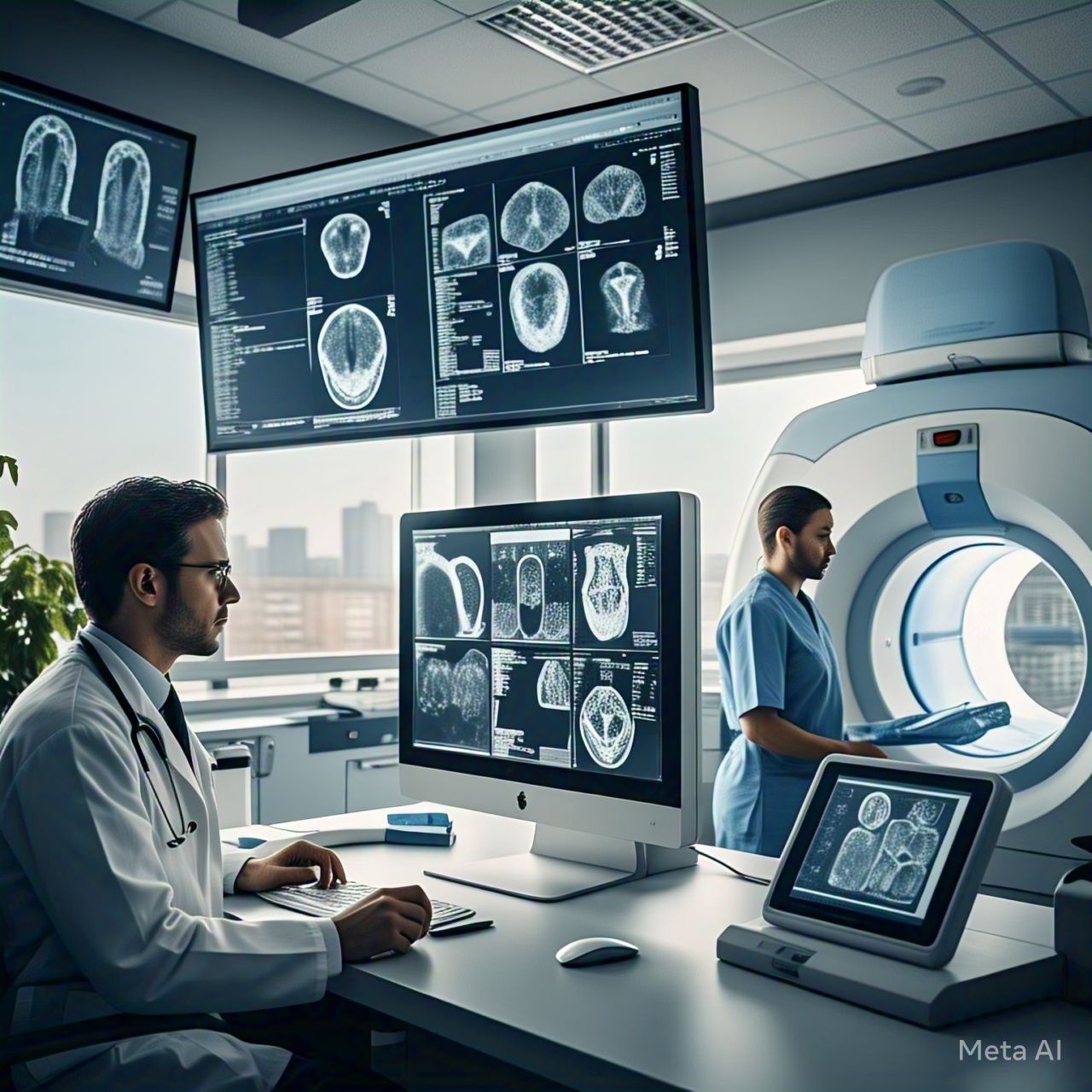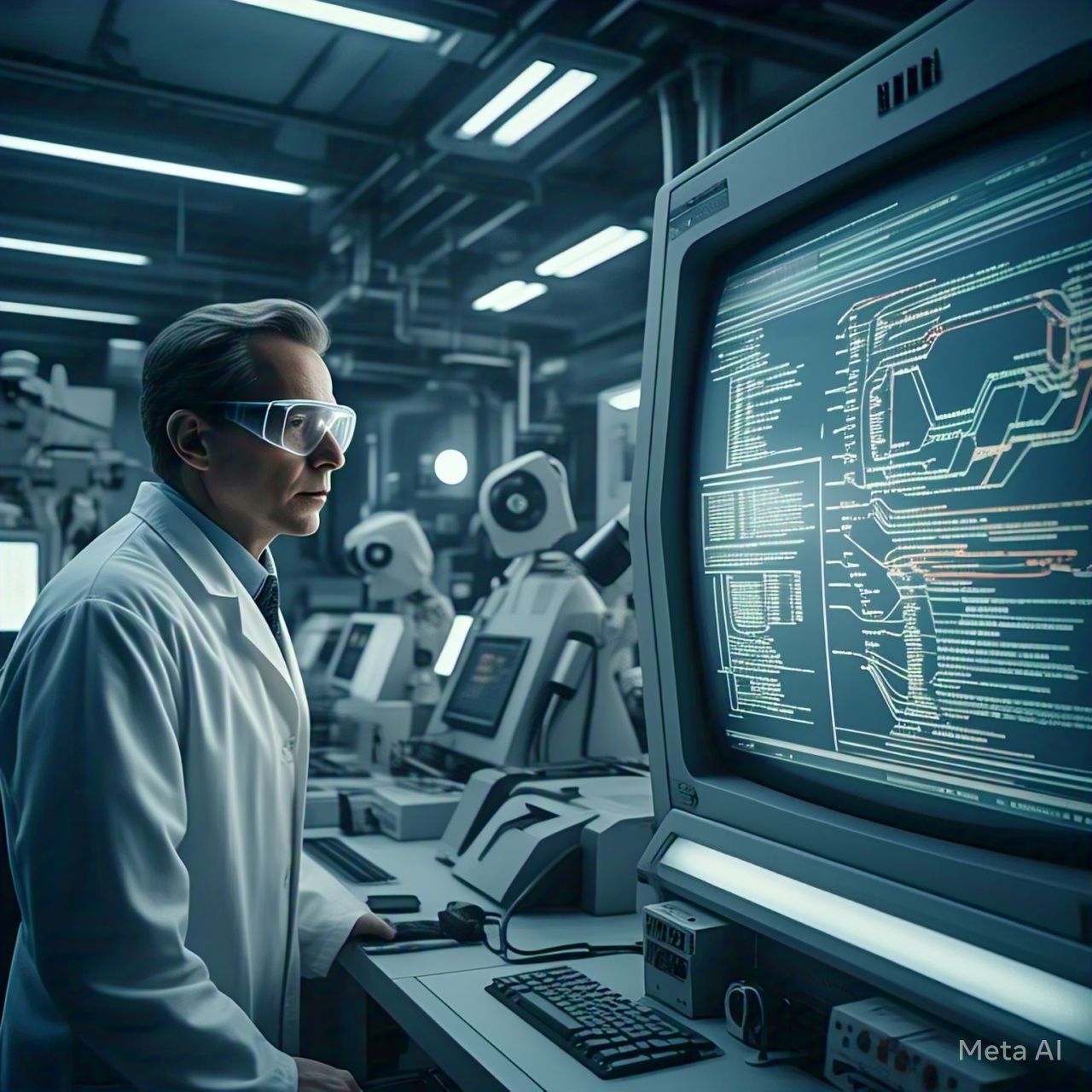Introduction
Artificial Intelligence (AI) is revolutionizing radiology by enhancing imaging accuracy, streamlining workflows, and accelerating diagnosis. AI-powered tools are transforming how radiologists interpret medical images, improving early disease detection and patient outcomes. With advancements in deep learning and computer vision, AI is making radiology smarter, faster, and more efficient than ever before.
The Role of AI in Radiology
AI is reshaping radiology by automating image analysis, reducing human errors, and assisting radiologists in making precise diagnoses. Machine learning algorithms can identify patterns in medical images that may be difficult for the human eye to detect, leading to improved accuracy and efficiency.
1. AI in Medical Imaging
AI enhances medical imaging by processing vast amounts of data quickly and detecting abnormalities with high precision. Deep learning models analyze X-rays, MRIs, CT scans, and ultrasounds to identify potential health concerns such as tumors, fractures, and infections.
2. Faster and More Accurate Diagnoses
Traditional radiological analysis can be time-consuming, but AI-driven systems speed up the process by highlighting areas of concern in images. AI can flag suspicious lesions or anomalies, allowing radiologists to focus on complex cases and reduce turnaround times.
3. Reduced Workload for Radiologists
AI-powered automation assists radiologists by handling routine tasks such as image segmentation, annotation, and report generation. This reduces fatigue and enables radiologists to focus on critical cases, improving overall efficiency and patient care.
4. Early Disease Detection and Predictive Analytics
AI is particularly effective in detecting diseases at their earliest stages. For example, AI models can identify lung nodules in CT scans that may indicate early-stage lung cancer. Predictive analytics powered by AI can assess a patient’s risk of developing conditions such as stroke or cardiovascular disease, enabling proactive intervention.
Benefits of AI in Radiology
- Enhanced Accuracy: AI reduces diagnostic errors by identifying patterns that may be overlooked by the human eye.
- Faster Analysis: AI algorithms analyze images in seconds, speeding up diagnosis and treatment decisions.
- Cost Savings: Early detection of diseases reduces healthcare costs by allowing timely and less invasive treatments.
- Improved Workflow Efficiency: AI automates repetitive tasks, freeing up radiologists’ time for complex case evaluations.
Challenges and Ethical Considerations
Despite its advantages, AI in radiology faces challenges such as data privacy concerns, regulatory approvals, and the need for extensive training data. Ethical considerations, including algorithm bias and the role of AI in clinical decision-making, must be addressed to ensure responsible implementation.
The Future of AI in Radiology
The future of AI in radiology is promising, with ongoing advancements in AI-powered imaging, augmented reality, and real-time analytics. AI-driven radiology will continue to evolve, integrating with electronic health records (EHRs) and wearable devices to provide comprehensive patient insights. As technology advances, AI will become an essential tool in radiology, enhancing diagnostic precision and patient care.
Conclusion
AI is transforming radiology by making imaging smarter, faster, and more efficient. With its ability to improve accuracy, reduce workload, and enable early disease detection, AI is set to become an indispensable asset in medical imaging. As AI continues to evolve, its integration with radiology will redefine how diseases are diagnosed and treated, ultimately improving healthcare outcomes.





